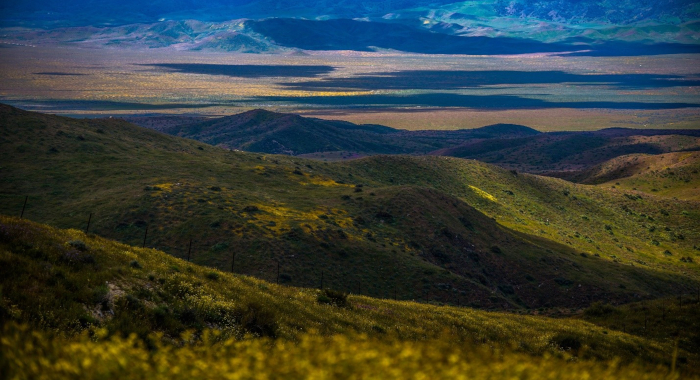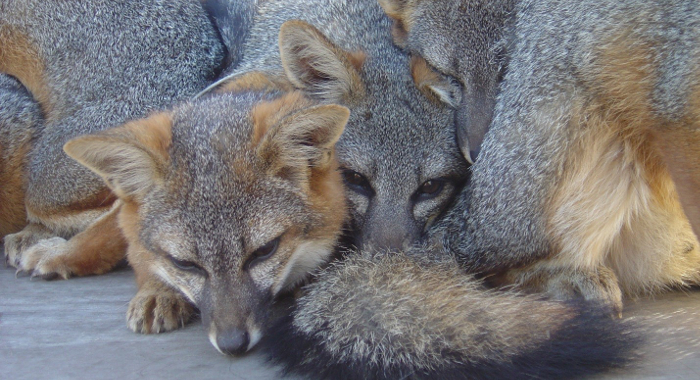Nearly half of California is protected in some land status that prevents most kinds of intensive human land uses. These lands support extensive natural habitats, and for many species, are a critical stronghold in an increasingly human-dominated world.
Yet, changes in the landscape in and near these places have left many in a degraded and precarious condition. Catastrophic wildfire, invasive species, and climate change threaten vast swathes of the state. Protected lands are becoming increasingly isolated by urban and agricultural development, roads, and other infrastructure. Such obstacles can limit a species’ ability to move to across the landscape and adapt to climate change.
Conservancy scientists are working to enhance the resiliency of protected lands in the face of rapid change, and to maintain the landscape connections necessary for plants and animals to adapt over time.


Nicholas D. Holmes, Olivier Langrand, Russell A. Mittermeier, Anthony B. Rylands, Thomas Brooks, Dena R. Spatz, James C. Russell, Wes Sechrest, Federico Méndez Sánchez, Cristina Mittermeier (Editor)
Covering only five percent of the land on our planet, islands are home to an estimated 20 percent of the world’s bird, reptile, and plant species, as well as the most astonishing examples of…Holmes ND, Keitt BS, Spatz DR, Will DJ, Hein S, Russell JC, Genovesi P, Cowan PE, Tershy BR
Indicators for tracking conservation efforts at a global scale are rare but important tools for understanding trends and measuring progress towards global conservation targets. Eradication of invasive…Rodd Kelsey, Abby Hart, H. Scott Butterfield, Dan Vink
Restoring habitat in retired farmland could reduce water demand and provide ecosystem services for farmers and local communities. In some areas of California, as a result of the Sustainable…Wolf CA, Young HS, Zilliacus KM, Wegmann AS, McKown M, Holmes ND, Tershy BR, Dirzo R, Kropidlowski S, Croll DA
Prior to eradication in 2011, non-native invasive rats were known to be active seed predators on Palmyra Atoll, Central Pacific Ocean. This paper reports on native and non-native tree and palm…Mario B. Pesendorfer, Christopher M. Baker, Martin Stringer, Eve McDonald‐Madden, Michael Bode, A. Kathryn McEachern, Scott A. Morrison, T. Scott Sillett
A key aim of conservation is to restore ecological processes to degraded ecosystems. This study models how reintroducing an ecosystem engineer – the island scrub-jay, which is a highly efficient…Jill E. Spear, Erik K. Grijalva, Julia S. Michaels, Sophie S. Parker
This paper discusses the impact of urban-dwelling plants and animals on regional wildland populations, both within and across species. The authors reviewed the global conservation literature and…Sophie S. Parker, Jim Moore, Leonard Warren
The 185 mile-long Amargosa River, one of only two rivers with perennial flow in the California portion of the Mojave Desert, is fed by an ancient groundwater aquifer. The river provides habitat for…Seth P. D. Riley, Trish Smith, T. Winston Vickers
Freeways are barriers to wildlife passage and gene exchange. In Southern California, mountain lion movement has been severely restricted due to this infrastructure. As a result, the mountain…Aburto-Oropeza, O., M. Edwards, S. Butterfield, and 93 additional authors
The U.S. and Mexico face many shared ecological changes due to the increased frequency and severity of droughts and rising energy demands; trends that entail economic costs for both nations and…Parker, S.S., B.V. Brown, B.S. Cohen, N.S. Fraga, J.J. Knapp, Z. Principe, J. Moore, G.B. Pauly, J.M. Randall, T.A. Wake
A bioblitz is a collaborative, rapid field assessment that takes place in a given location over a short period of time. This paper discusses how bioblitz events involving experts are being used to…Parker, S.S., B.S. Cohen, N. Fraga, B. Brown, J. Cole, W. Chatfield-Taylor, K. Guadalupe, G.B. Pauly, D. Cooper, M. Ordeñana
In 2017, The Nature Conservancy co-organized an “Expert BioBlitz” to explore a 26-mile stretch of the Wild and Scenic Amargosa River, located in the heart of the Mojave Desert. The event…D. Richard Cameron, David C. Marvin, Jonathan M. Remucal, Michelle C. Passero
Combatting climate change will require using all available tools, especially those that contribute to other societal and economic goals, such as natural resource protection and energy security.…Rodd Kelsey, Edward Smith, Tanushree Biswas, Chris McColl, Kristen Wilson, Dick Cameron
This report provides a systematic regional-scale assessment of biodiversity, fire regime change, and fire risk to infrastructure of forested watersheds across the Sierra Nevada and prioritizes…Mario B. Pesendorfer, T. Scott Sillett, Scott A. Morrison
An individual jay can cache thousands of oak seeds per year, and in so doing provide oaks a means to disperse long distances. This ecological process can be especially important in restoration of…K.M. Langin, T.S. Sillett, W.C. Funk, S.A. Morrison, C.K. Ghalambor
Genetic diversity is an important target in biodiversity conservation. Understanding how it tends to be distributed across ranges of species can improve conservation planning. This paper examines…